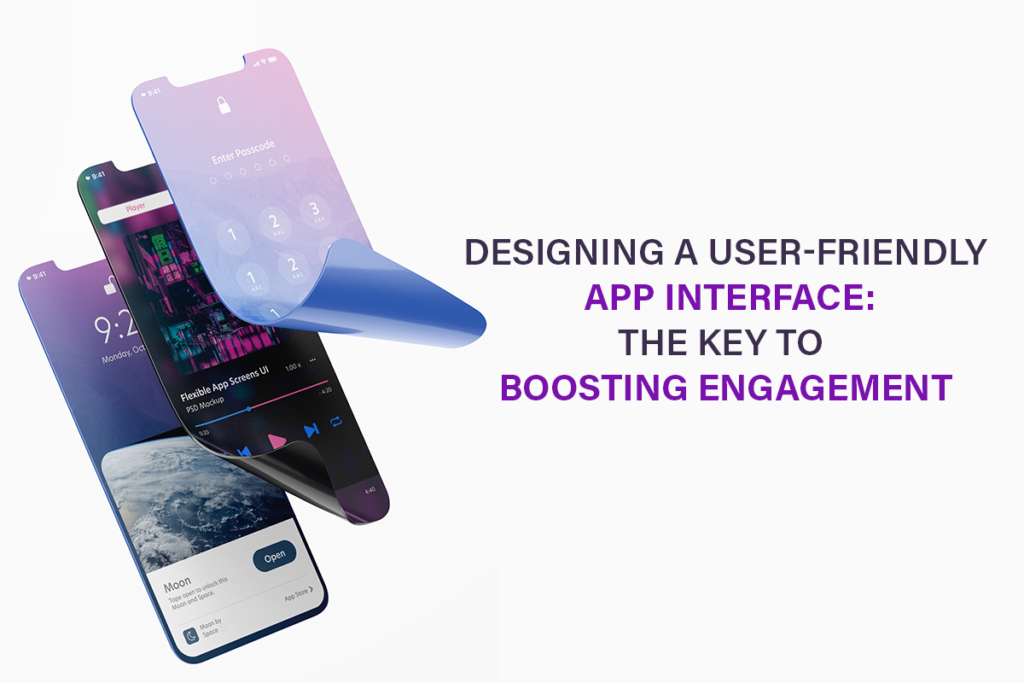
Designing a User-Friendly App Interface to Boost Engagement
Creating a user-friendly interface is essential for the success of your app. With millions of apps available to users, designing an engaging and intuitive app interface can be a differentiating factor that sets your app apart from the rest. In this article, we will explore the key elements of designing a user-friendly app interface that not only captivates users but also boosts engagement.
Understanding Your Users
Before diving into app design, it’s crucial to understand your target audience. Conduct thorough research to identify their preferences, needs, and pain points. Gather insights on their demographics, behavior patterns, and technological proficiency. This knowledge will help you create a user-centric app interface that caters to their specific requirements.
Simplicity is Key
One of the fundamental principles of app design is simplicity. Users should be able to navigate through your app effortlessly, without feeling overwhelmed or confused. Keep the interface clean, uncluttered, and visually appealing. Use clear and concise language, intuitive icons, and easily recognizable symbols to guide users through the app’s functionalities.
Intuitive Navigation
Navigation plays a crucial role in user experience. A well-designed navigation system enhances app usability and encourages users to explore further. Utilize familiar navigation patterns such as tab bars, hamburger menus, or swipe gestures to provide a seamless browsing experience. Aim for a maximum of three levels of navigation to avoid complexity.
Consistent Branding
Consistency in branding helps create a cohesive user experience. Implement your brand’s color scheme, typography, and visual elements consistently throughout the app. A unified brand identity builds trust, strengthens recognition, and enhances the overall app interface.
Responsive Design
With the increasing use of smartphones and tablets, it’s vital to ensure your app interface is responsive across different screen sizes and resolutions. Adopt a responsive design approach to optimize the app for various devices. Elements should adapt fluidly to different screen orientations without sacrificing usability or visual appeal.
Clear Call-to-Actions
To boost your app engagement, incorporate clear and prominent call-to-action buttons within your app. Users should know exactly what action to take next. Use contrasting colors, larger button sizes, and persuasive copy to guide users toward desired interactions, such as making a purchase, subscribing, or sharing content.
Personalization and Customization
Allowing users to personalize their app experience can significantly enhance engagement. Implement features that enable users to customize settings, preferences, and notifications according to their preferences. Personalization creates a sense of ownership and investment in the app, leading to increased user satisfaction and loyalty.
Feedback and User Support
Providing users with avenues to offer feedback, report issues, or seek support is crucial for maintaining a user-friendly app interface. Incorporate feedback mechanisms, such as in-app surveys or ratings, to gather insights for continuous improvement. Additionally, offer accessible customer support channels to address user queries promptly, ensuring a positive user experience.
Regular Updates and Enhancements
To stay competitive, it’s important to consistently improve and enhance your app interface. Regularly analyze user feedback, track metrics, and monitor industry trends to identify areas for improvement. Release updates that address user concerns, introduce new features, and optimize performance. By demonstrating your commitment to delivering an exceptional user experience, you will foster user loyalty and encourage continued engagement.
As an app marketer, investing time and effort into designing a user-friendly interface is an investment well worth making. A well-designed app interface can attract new users, retain existing ones, and foster increased engagement and usage. By understanding your target audience, simplifying navigation, maintaining consistent branding, and incorporating personalization features, you can create an interface that users will find intuitive, enjoyable, and memorable.
Remember to continually gather user feedback and leverage data analytics to make informed decisions about interface enhancements and updates. The app market is dynamic, and user preferences can change over time. By staying attuned to user needs and evolving trends, you can ensure that your app interface remains user-friendly and competitive.
Ultimately, designing a user-friendly app interface is an ongoing process that requires a deep understanding of your target audience and their preferences. By prioritizing simplicity, intuitive navigation, and responsiveness, you can create an app interface that not only engages users but also leaves a positive and lasting impression.
So, as an app marketer, embrace the challenge of designing a user-friendly app interface to boost engagement. By implementing the principles outlined in this article, you can set your app apart from the competition, cultivate a loyal user base, and position your app for long-term success in the ever-evolving world of mobile applications.
Please feel free to Contact Us in case you need any guidance regarding your app marketing needs.




0